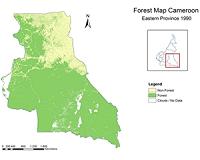| . |  |
. |
Madrid, Spain (SPX) Dec 15, 2010 The researchers decided to embark on this study in order to find out which mechanisms are used by plants when they extract water from very dry or somewhat inhospitable land. "In the case of mangrove swamps, for example, the plants are able to extract freshwater from a saltwater environment, despite the fact that the osmotic pressure should make quite the opposite happen", explains Professor Jose Luis Perez Diaz, who studies this type of relatively unknown phenomenon as part of a new line of research that the Department of Mechanical Engineering at UC3M has begun. The objective of the study is to learn what type of mechanism the plants use when extracting the water and transporting it from the roots to the leaves. To do this, the researchers have generated a model that represents the microscopic structure of the trunk of a European beech tree (Fagus sylvatica) in order to study the changes produced when the water moves through its interior; they have published some of the results of their research in a recent issue of the Journal of Biological Physics. The three-dimensional model created by these UC3M scientists allows them to analyze the transpiration and absorption of the bark of the tree, as well as the pressure in the different types of conduits, such as the floem or xylem, that transport fluids inside the trunk. The first is a vascular tissue that carries sugars and other synthesized nutrients from the organs that produce them to the organs where they are consumed and stored, in both upward and downward directions. Xylem, on the other hand, is different type of tissue that is adapted especially for conveying water upward for the length of the plant; its elements are arranged in longitudinal rows, through more or less continuous sections of conduits. The main conclusion of this study is that the sap in the trunks of trees is in a pressurized situation. It demonstrates, then, that when the pressure is positive in the conduits of the xylem as well as in those of the floem, the model expands in the radial direction. However, when the pressure is negative in the xylem and positive in the floem, which is what is believed to occur during the day, the model contracts in the radial direction. "Our results are not absolutely conclusive yet, but they set us on a path to continue our study and to find out more about these processes", says Professor Perez Diaz. This line of research could have interesting applications for hydraulic systems or devices for water extraction, for example. "Currently - the expert points out - there is no water suction pump capable of raising water more than ten meters at normal atmospheric pressure, but a sequoia tree can raise water to a height of 100 meters, which I think means that anything we can learn from plants is going to be of great interest to people working in this field", he concludes.
Share This Article With Planet Earth
Related Links Carlos III University of Madrid Forestry News - Global and Local News, Science and Application
 Cancun Offers Hope For Forests And Climate
Cancun Offers Hope For Forests And ClimateParis, France (ESA) Dec 14, 2010 The climate summit in Cancun, Mexico, last week agreed a package that will set up a new green climate fund for adapting to climate change, transferring technology to developing countries and reducing emissions by avoiding deforestation and forest degradation. Although countries made voluntary commitments to reduce their greenhouse gas emissions, they acknowledged that they still fall short ... read more |
|
| The content herein, unless otherwise known to be public domain, are Copyright 1995-2010 - SpaceDaily. AFP and UPI Wire Stories are copyright Agence France-Presse and United Press International. ESA Portal Reports are copyright European Space Agency. All NASA sourced material is public domain. Additional copyrights may apply in whole or part to other bona fide parties. Advertising does not imply endorsement,agreement or approval of any opinions, statements or information provided by SpaceDaily on any Web page published or hosted by SpaceDaily. Privacy Statement |